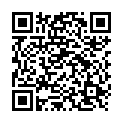|
|
|
| Module code: E517 |
|
|
2V (2 hours per week) |
|
2 |
| Semester: 5 |
| Mandatory course: yes |
Language of instruction:
German |
Assessment:
Written examination
[updated 12.03.2010]
|
E517 (P211-0184) Electrical Engineering, Bachelor, ASPO 01.10.2005
, semester 5, mandatory course
|
30 class hours (= 22.5 clock hours) over a 15-week period.
The total student study time is 60 hours (equivalent to 2 ECTS credits).
There are therefore 37.5 hours available for class preparation and follow-up work and exam preparation.
|
Recommended prerequisites (modules):
E304 Electrical Engineering Theory I
[updated 12.03.2010]
|
Recommended as prerequisite for:
E613 High-Frequency Engineering Lab Course
[updated 12.03.2010]
|
Module coordinator:
Prof. Dr. Martin Buchholz |
Lecturer:
Prof. Dr. Martin Buchholz
[updated 12.03.2010]
|
Learning outcomes:
After successfully completing this course, students will have an understanding of the basic principles of signal transmission in fibre-optic cables and networks. They will be able to describe and explain an entire optical transmission path. Students will be acquainted with the latest technical specifications of optical components and systems. The course will enable students to critically compare and assess optical communications systems (enormous transmission capacities, rapid innovation) with other communications systems. The skills acquired can be used to compile specifications for optical transmission paths.
[updated 12.03.2010]
|
Module content:
1.Introduction
2.Basic optical principles
3.Light transmission in optical fibres
Monomode and multimode optical waveguides
Step index and graded-index optical fibres
4.Dispersion
5.Optical transmitters
LEDs and high-intensity laser diodes
6.Modulation of optical radiation
Direct and external modulators
7.Optical receivers
PIN and avalanche photodiodes, diode noise
8.Optical amplifiers
Erbium-doped fibre amplifiers (EDFA), Raman amplifiers, high-power laser
amplifiers
9.Optical networks and components
SDH networks, wavelength multiplexers, CDWM, DWDM
10.Measuring and instrumentation methods used in optical communications systems
OTDR, dispersion measurements, attenuation measurements
[updated 12.03.2010]
|
Teaching methods/Media:
Overhead transparencies, video projector
[updated 12.03.2010]
|
Recommended or required reading:
Schiffner, G.: Optische Nachrichtentechnik - Physikalische Grundlagen, Entwicklung, moderne Elemente und Systeme, Teubner Verlag, 2005
Brückner, V.: Optische Nachrichtentechnik - Grundlagen und Anwendungen, Teubner Verlag, 2003
Voges, E., Petermann, K.: Optische Kommunikationstechnik, Handbuch für Wissenschaft und Industrie, Springer, 2002
Krauss, O.: DWDM und optische Netze, Publicis Corporate Publishing, 2002
Unger, H.G.: Optische Nachrichtentechnik I – optische Wellenleiter, Hüthig Telekommunikation, 1993
Unger, H.G.: Optische Nachrichtentechnik II – Komponenten, Systeme, Messtechnik, Hüthig Telekommunikation, 1992
Grau, G.; Freude, W.: Optische Nachrichtentechnik – Eine Einführung, Springer, 1991
[updated 12.03.2010]
|


